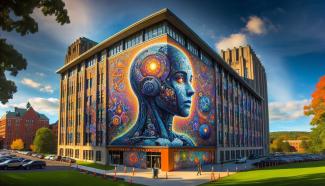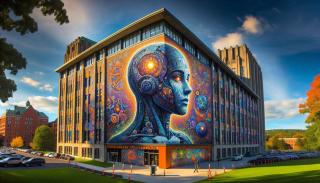What is generative AI?
Generative AI is a branch of artificial intelligence that creates new and novel material from existing data. Generative AI can produce realistic images, texts, sounds, videos, and more, that are not present in the original data. For example, generative AI can create faces of people who do not exist, write stories based on a given prompt, compose music in different styles, or generate realistic landscapes.
Why is generative AI a big deal?
OpenAI's ChatGPT, released in November 2022, was the first generative AI tool made available for the public. ChatGPT showed how generative AI can create interactive and conversational texts, such as chatbots, assistants, or tutors, that can talk to humans in natural language. ChatGPT’s release sparked the rapid research and development of generative AI tools, as well as the related rise of social and ethical issues. Since then, other AI chat tools like Microsoft Copilot, Google Gemini, and Anthropic Claude, have emerged, and many software platforms are integrating AI capabilities into their products. Generative AI is important because it is a fast-growing field that will affect individuals, organizations, and society. Generative AI can enhance human creativity, productivity, and communication, by offering new ways to generate and share content. It can also create new forms of education, entertainment, and expression, by making personalized and interactive experiences for users. However, generative AI also has some risks and challenges, such as ethical, legal, and social issues. Generative AI can be used for harmful purposes, such as creating fake or misleading texts, images, or videos, to spread misinformation, propaganda, or cyberattacks. It can also impact the quality, credibility, and diversity of information, by making biased or homogeneous content that supports existing stereotypes or prejudices. Furthermore, generative AI can raise questions about the ownership, authorship, and responsibility of the generated content, as well as the privacy, security, and consent of the data sources and users.
What are some applications of generative AI?
Generative AI has many potential applications in various domains and industries. Some examples are:
- Art and entertainment: Generative AI can create original and diverse artworks, such as paintings, drawings, or animations. It can also generate music, lyrics, stories, or movies, based on the preferences and inputs of the users.
- Education and research: Generative AI can create synthetic data sets for training and testing other AI models, or for conducting experiments and simulations. It can also generate educational content, such as quizzes, summaries, or explanations, based on the learning objectives and the level of the students.
- Business and marketing: Generative AI can create customized and engaging content, such as logos, slogans, ads, or product designs, based on the target audience and the brand identity. It can also generate realistic and diverse customer reviews, testimonials, or feedback, for improving customer satisfaction and loyalty.
- Data Analysis and Summarization: AI can take large amounts of text and numerical data, look for insights, and provide summaries. It can provide a range of analysis, from generating a synopsis or sentiment score for a body of text, looking for similarities or differences between data sets, to writing the code to do statistical and numerical analysis.
- Software Development: Large Language Models can create software in various languages, writing new code to solve novel problems. AI can debug existing code, and even add comments and explanations to aid in understanding.


